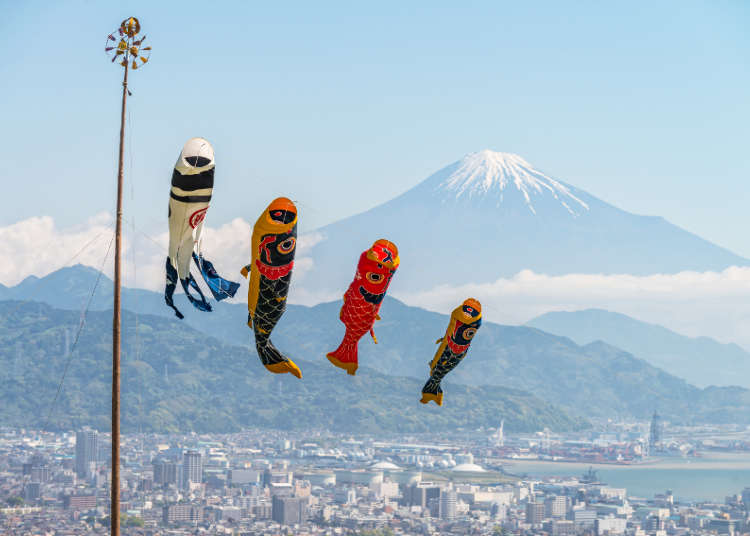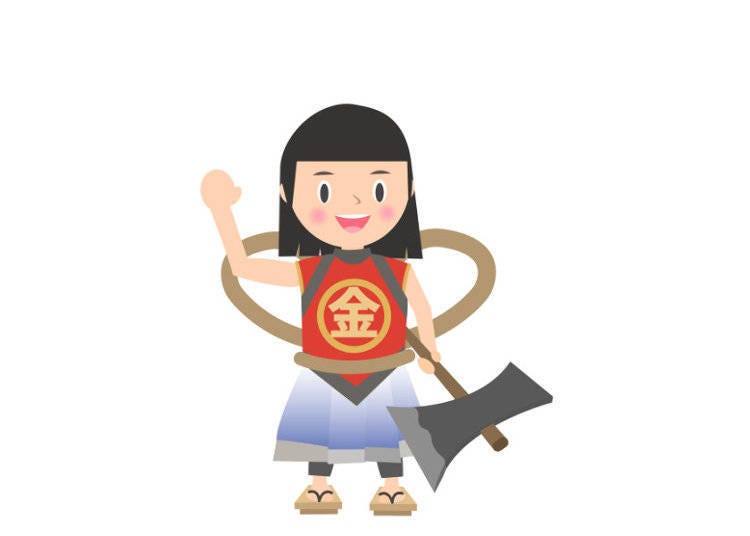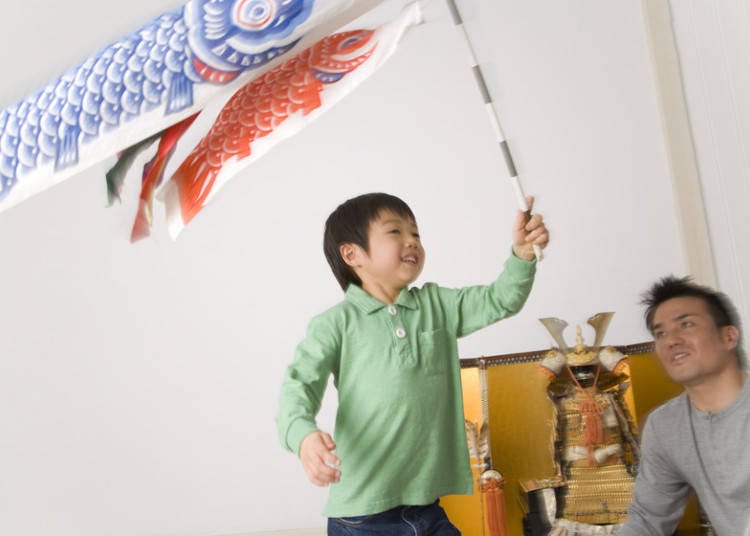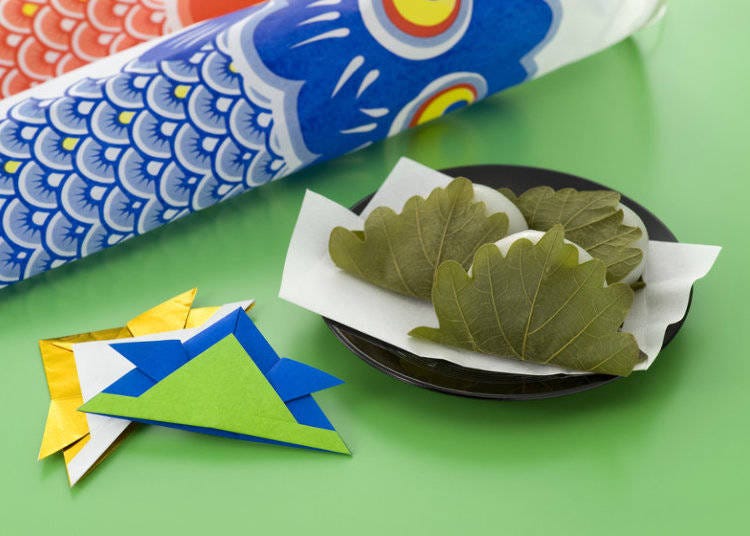
You may be acquainted with Mother's Day, Father’s Day, or Grandparents Day, but did you know that Japan also has a special day that is dedicated to children?
During Golden Week, each May 5, people celebrate Children’s Day. Known as “Kodomo no Hi” in Japanese, this is a day honoring the health, happiness, and individuality of children, and also giving appreciation toward mothers.
History of Kodomo no Hi: From Samurai to Boys’ Day

This holiday was not always known as Children’s Day.
Originally celebrated on the fifth day of the fifth moon in the Chinese lunar calendar, the celebration used to be known as Boys’ Day, or ‘Tango no Sekku’, and was strongly linked to samurai culture. There is also a “Girls’ Day” on March 3, which is still celebrated to this day.

On Boys’ Day, families would raise carp streamers known as ‘koinobori,’ in honor of the legend of the carp that swims upstream to become a dragon.
It was also customary to display a Kintaro doll. Kintaro is the name that legendary samurai Minamoto no Yorimitsu went by as a boy.
He was known for his incredible strength, even as a child, when he is said to have ridden a bear. Kabuto, the name for a samurai helmet, is another symbol representing Tango no Sekku.
“Kodomo no Hi” is Born

In 1948, the Japanese government declared May 5 as an official national holiday, to be known as Kodomo no Hi. Many of the traditions that began as Boys’ Day carried over to Children’s Day, such as the flying of carp and Kintaro imagery.
A special bath called ‘shobu-yu’ may also be prepared, using the leaves and roots of an iris, which are said to be shaped like the sword of a samurai (fitting in with the original concept of Boys’ Day), and believed to ward off illness.
Children’s Day in Modern Japan

There are also certain traditional foods that are eaten on this day. Kashiwa mochi is one such sweet: a pounded rice cake filled with red bean paste and wrapped in an oak (‘kashiwa’) leaf.
Another Children’s Day food, Chimaki, which is said to have originated in China, consists of a long, sticky rice cake wrapped in a bamboo leaf. (Note: neither of the leaves wrapping these rice cakes are intended to be eaten.)

Children’s Day continues to be enjoyed even today. It’s a day not only celebrated in the homes of Japanese families, but also in the children’s schools, who incorporate the holiday into fun activities, keeping this old tradition as lively as ever, even in the 21st century.
*Prices and options mentioned are subject to change.
*Unless stated otherwise, all prices include tax.
Popular Tours & Activitiess
Recommended places for you
-

Jukuseiniku-to Namamottsuarera Nikubaru Italian Nikutaria Sannomiya
Izakaya
Kobe, Sannomiya, Kitano
-

Kambei Sannomiyahonten
Yakiniku
Kobe, Sannomiya, Kitano
-
Appealing

Rukku and Uohei
Izakaya
Sapporo / Chitose
-

Kanzenkoshitsuyakinikutabehodai Gyugyu Paradise Sannomiya
Yakiniku
Kobe, Sannomiya, Kitano
-
Goods

Yoshida Gennojo-Roho Kyoto Buddhist Altars
Gift Shops
Nijo Castle, Kyoto Imperial Palace
-

ISHIDAYA Hanare
Yakiniku
Kobe, Sannomiya, Kitano
-

Tokyo City Pass Upgrade: Harry Potter Studio Tour & Top Sights up to 85% Off
by: Guest Contributor
-

Enjoy Japan's Gorgeous Winter Lights! Ride the Romancecar to Shonan no Hoseki Illumination
by: Guest Contributor
-

Keisei × Keikyu 16-Temple Goshuin Tour: Discover Deeper Tokyo & Yokohama
by: Guest Contributor
-

Get Ready to Catch 'Em All! First Ever Permanent Outdoor Pokémon Park Opening Near Tokyo!
-

New Seibu L00 Series Launching in 2026! What to See Along the Tokyo-Area Golden Route
by: Guest Contributor
-

Don't Miss Out! The One Thing You Must Do Before Shopping at Mitsui Shopping Park LaLaport: Get Your Max 10% OFF Coupon Book
-

Nightlife in Ginza
-
Ad

13 Tokyo Activities to Book on Rakuten Travel Experiences for Unforgettable Memories
-

23 Must-Visit Shopping Spots in Shibuya: From Timeless Favorites to New Gems
-

What to Pack for Japan: 8 Essential Things for a Hassle-Free Trip
-

Visiting Japan's Miffy Cafe Will Make Your Heart Melt (Photos)
-

Yamagata Prefecture Guide: Destinations, Activities, Travel Advice, Shopping & More
by: Steve Csorgo
- #best sushi japan
- #what to do in odaiba
- #what to bring to japan
- #new years in tokyo
- #best ramen japan
- #what to buy in ameyoko
- #japanese nail trends
- #things to do japan
- #onsen tattoo friendly tokyo
- #daiso
- #best coffee japan
- #best japanese soft drinks
- #best yakiniku japan
- #japanese fashion culture
- #japanese convenience store snacks












